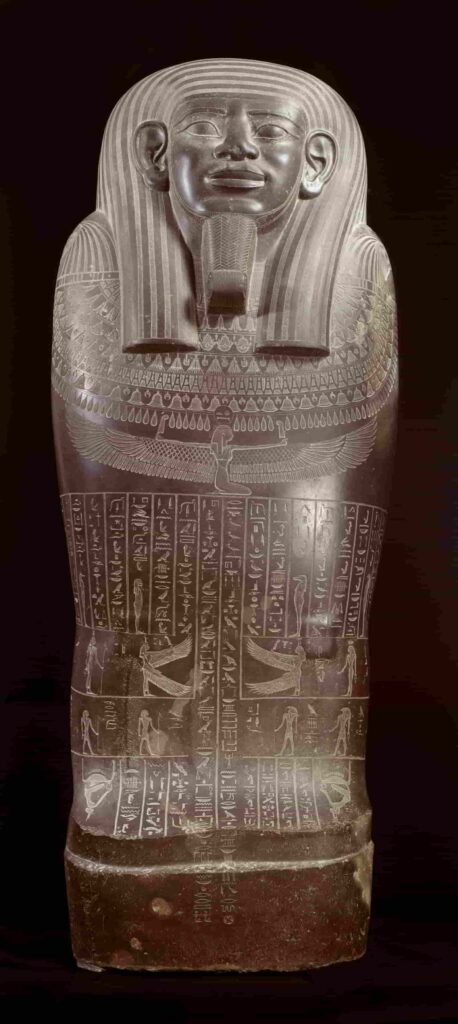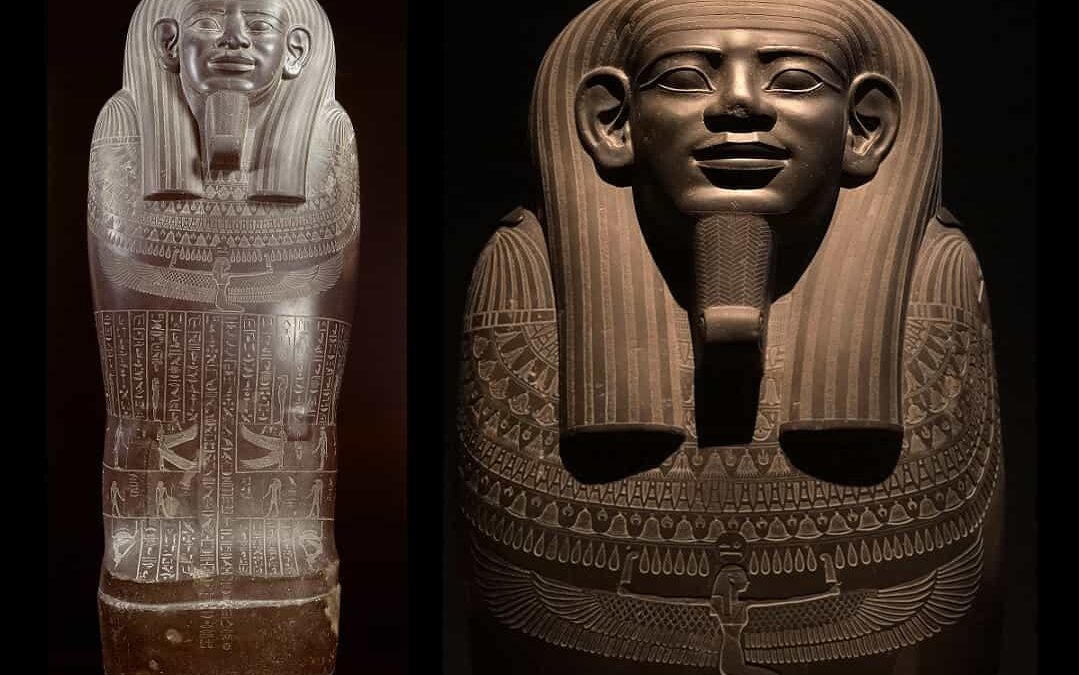During the span from 700 to 500 B.C., the trend in Egypt shifted towards large sarcophagi crafted from black stone, supplanting the traditional wooden mummy coffins. The sarcophagus of Wahibreemakhet serves as a prime example of this shift, fashioned from solid basalt.
The moniker Wahibreemakhet, meaning ‘Wahibre is in the horizon,’ pays homage to Pharaoh Psamtik I (664-610 BC), known by his throne name Wahibre. However, beneath this Egyptian facade lies a distinctly Greek lineage: an inscription on the sarcophagus mentions the names of his parents, Alexikles and Zenodote.
During the reign of the 26th Dynasty, Egypt maintained robust relations with Greek city-states. Many Greeks enlisted in Egyptian armies as mercenaries or sought fortunes as merchants in the bustling capital of Memphis.
The city even witnessed the establishment of a dedicated Greek quarter, while numerous Greeks settled in the free port of Naukratis and other areas in the Nile delta.
Despite hailing from a Greek immigrant family, Wahibreemakhet’s sarcophagus boasts distinctly Egyptian decorations, including a divine beard, a braided wig, the celestial goddess Nut adorning his chest, and depictions of the Sons of Horus and various gods and demons.
Believed to have originated from Saqqara or Giza, the sarcophagus stands devoid of any remnants of its wooden inner coffin or the mummy it once contained. However, statuettes of Wahibreemakhet, known as shabti figurines, have survived.
It is intriguing that Wahibreemakhet’s sarcophagus lacks the customary titles indicative of his status, suggesting considerable wealth. The abundance of ushebtis, funerary statues symbolizing servants, further underscores his assimilation into Egyptian society.
Dating back to the 26th Dynasty, circa 664-525 BC, this remarkable artifact now resides in the Rijksmuseum van Oudheden in Leiden, Netherlands. It was photographed at the Getty Center in Los Angeles for an exhibition titled “Beyond the Nile: Egypt and the Classical World.”








